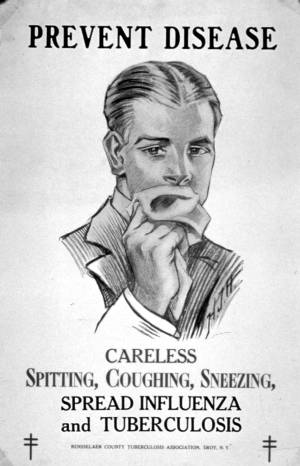Update posted 8-14-2012: For flu shot updates for the 2012-2013 influenza season, click here.
*******
Update posted 9-22-2011: For flu shot updates for the 2011-2012 influenza season, click here.
*******
Update Posted 12-20-2010 – Medicare posted code changes for flu vaccines billed to Medicare after January 1, 2011. Click here for the changes.
For dates of service on or after September 1, 2010, the corrected Medicare Part B payment allowance for CPT 90655 is $14.858.
*******
It’s that time again, and despite delayed deliveries to some hospitals and practices, the word on the street is that there will be enough flu vaccine (171 million doses) this year for all who want a flu shot.

Image via Wikipedia
The Center for Disease Control (CDC) recommends that everyone 6 months and older get a flu shot. Each year’s flu vaccine cocktail is unique and this season’s (2010-2011) flu vaccine will protect against three different flu viruses: an H3N2 virus, an influenza B virus and the H1N1 virus that caused so much illness last season.
The Affordable Care Act and the Influenza Vaccine
Just in time for flu season is the Affordable Care Act’s emphasis on preventive care. The ACA states:
This influenza season, children 6 months through 18 years, certain high-risk adults 19 through 49 years, and adults 50 years and older who are enrolled in new group and individual health plans will be eligible to receive the seasonal flu vaccine without cost-sharing when provided by an in-network provider. Beginning in the plan year that starts after March 2, 2011, all adults 19-49 years of age will be eligible to receive the seasonal flu vaccine with no cost-sharing requirements when provided by an in-network provider.
This is great news for the patient and for healthcare in general. You may consider it good news or bad news, depending on your view of the whole flu shot process. Here’s how it works in many practices:
- The vaccine is ordered in the spring, with everyone trying hard to guess correctly how many patients will want flu shots in 6 months.
- The vaccine arrives in the fall and the first hurdle is pricing it, as you will have to decide how much to mark it up to cover the cost of the ordering, handling and stocking and possibly a teeny profit.
- The administration of the vaccine also has to be priced to cover the cost of supplies (syringe, alcohol swab, sometimes a bandaid, printed Vaccine Administration Sheets) and the cost of labor (assessing the patient to make sure they can get the flu shot, giving the shot, and documenting the lot numbers in case of a recall.)
- The next decision is disbursement. Do you have a flu shot clinic and have people get in line for the flu shot, or do you take flu shot appointments, do you give flu shots during regular appointments, or some combination thereof? What about drive-through flu clinics? Do people sit in the parking lot for 15 minutes to make sure there are no bad after-effects? How do you let patients know about your flu shot plans without costly postcards or advertisements?
- Then, there is policy setting for patients whose insurance covers the flu shot and for patients whose insurance does not. Do you collect and refund if necessary, or do you not collect and bill the patient after insurance responds (Jaws theme music here, please.)
Does Medicare pay for flu shots?
Medicare pays 100% of the allowable for influenza vaccine (and pneumococcal vaccines) and the administration of the vaccines without any out-of-pocket costs to the patient. One flu vaccine is allowable per flu season, but Medicare will pay for a second flu shot if a physician determines and documents the medical necessity. A physician’s order is not necessary and a physician’s supervision is not necessary – that’s why patients are able to get a flu shot at the drugstore. A patient can receive a flu shot twice in one calendar year by getting a flu shot late in one season and getting a flu shot early in the next season.
How should a provider that is not enrolled in Medicare bill for the flu vaccine?
CMS typically does not allow non-enrolled providers to treat Medicare beneficiaries, however, CMS is allowing them to give flu shots this year. Beneficiaries can receive a flu vaccine from any licensed physician or provider. However, the billing procedure will vary depending on whether the physician or provider is enrolled in the Medicare Program.
If you are not a Medicare-enrolled physician or provider who gives a flu vaccine to a Medicare beneficiary, you can ask the beneficiary for payment at the time of service. The beneficiary can then request Medicare reimbursement. Medicare reimbursement will be approximately $18 for each flu vaccine.
- Image via Wikipedia
To request reimbursement, the beneficiary will need to obtain and complete form CMS 1490S. So the beneficiary may receive reimbursement, you will need to provide the beneficiary with a receipt for the flu vaccine that has the following information written or printed on it:
”¢ The doctor’s or provider’s name and address
”¢ Service provided (“flu vaccine”)
Ӣ Date flu vaccine received
Ӣ Amount paid
What codes are used for flu shots?
For flu vaccine and vaccine administration, the following codes are used.
Effective September 1, 2009, (no 2010 changes have been announced) the Medicare Part B payment allowances for influenza vaccines are as follows:
- For HCPCS 90655, the payment will be $15.447: Influenza virus vaccine, split virus, preservative free, for children 6- 35 months of age, for intramuscular use
- For HCPCS code 90656, the payment will be $12.541: Influenza virus vaccine, split virus, preservative free, for use in individuals 3 years and above, for intramuscular use
- For HCPCS code 90657, the payment will be $15.684: Influenza virus vaccine, split virus, for children 6-35 months of age, for intramuscular use;
- For HCPCS code 90658, the payment will be $11.368: Influenza virus vaccine, split virus, for use in individuals 3 years of age and above, for intramuscular use
- HCPCS 90660 (FluMist, a nasal influenza vaccine) may be covered if the local Medicare contractor determines its use is medically reasonable and necessary for the beneficiary. When payment is based on 95 percent of the Average Wholesale Price (AWP), the Medicare Part B payment allowance for CPT 90660 is $22.316 (effective September 1, 2009).
G0008 is the Medicare HCPCS for Administration of influenza virus vaccine, including FluMist. Other payers usually require use of 90465, 90466, 90467, 90468, 90471, 90472, 90473 or 90474 for administration of the vaccine.
The associated ICD-9 codes for flu shots are:
V04.81 Influenza
V06.6 Pneumococcus and Influenza (both vaccines at one visit)
Other resources:
- Get your practice and your staff ready for flu season by following the guidelines I write about here.
- Free downloads from the CDC here.
- MedLine Plus Articles, Downloads and Resources here
- Article: Mandating Influenza Vaccine – One Hospital’s Experience (MedScape free account required)
- National Foundation for Infectious Diseases: Influenza
- National Influenza Vaccine Summit: Prevent Influenza
- Vaccine Education Center at Children’s Hospital of Philadelphia (CHOP) -Influenza: What You Should Know (pdf) EnglishSpanish
- Medicare Preventive Services Quick Reference Information Chart: Medicare Part B Immunization Billing (Influenza, Pneumococcal, and Hepatitis B) is available here (pdf.)
- For information on roster billing (billing for many patients at one time) see the Medicare Claims Processing Manual for Preventive and Screening Services (Chapter 18) here (pdf) Section 10-3.
NOTE: Beneficiaries have been advised to contact the Inspector General hotline at 1-800-HHS-TIPS (1-800-447-8477) to file a complaint if they believe their physician or provider charged an unfair amount for a flu vaccine.



